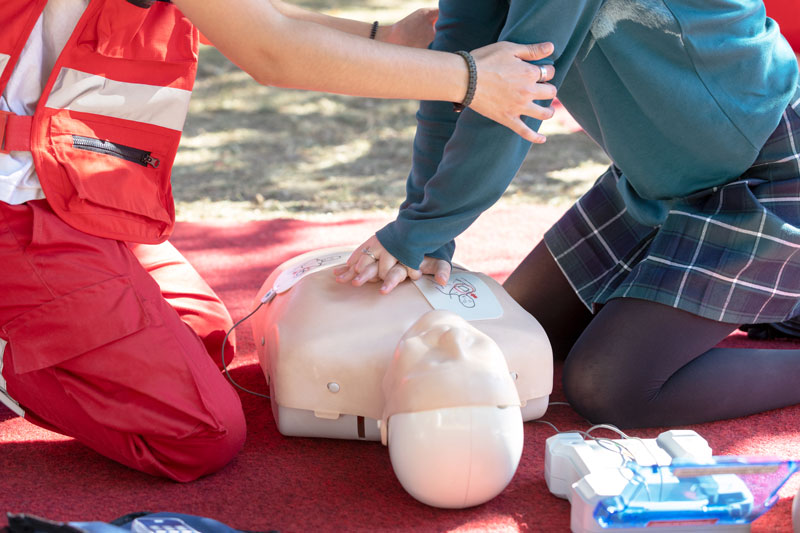-
Contact
Sales & Customer Service
0800 612 6537 support@safelincs.co.uk Live ChatDelivery Enquiries
0800 077 6149 - Resources
Fire & Safety Solutions
CALL OUR TEAM NOW 0800 612 6537
Lines open today 8am - 6pm
Free Delivery
on 100s of Products
Live Chat - Online
Instant help & Advice
Trade Discounts
and exclusive pricing
0% Credit Available
Open an account now
5 Star Customer Feedback
Defibrillators in Schools
There is very little schools can do to predict the possibility of a pupil or member of staff suffering a sudden cardiac arrest (SCA). However, all schools can ensure the best chance of survival for anyone suffering from SCA by having a defibrillator on site. An announcement by the Department for Education means that all schools in England are required to have at least one AED (Automatic External Defibrillator) on their premises by the end of the academic year 2022/2023. This is in addition to the requirements already in place for schools to teach first aid including CPR and the purpose of defibrillators as part of the curriculum in secondary schools.

The announcement follows a long campaign by the Oliver King Foundation and other leading charities who have been instrumental in ensuring all schools have this life-saving equipment and the skills and training to use the AED and perform CPR. 12 young people under the age of 35 die each week in the UK due to cardiac arrest. Many of these lives could have been saved if AEDs were quickly accessible at the time.
Which defibrillator is best for schools?
The Department for Education have created specifications that all defibrillators in schools should meet. This includes having a semi-automatic defibrillator with adult and child electrode pads so the level of shock can be altered quickly depending on the age of the patient. You can find AEDs and necessary equipment that meet all of the specifications in our dedicated 'Defibrillators for Schools' section.
What are the symptoms of Sudden Cardiac Arrest?
Cardiac arrest usually occurs very suddenly and there are usually no prior warning signs. In fact, 90% of victims of SCA showed no symptoms of any heart problems. This makes preparation for such events impossible.
When someone experiences a cardiac arrest, they collapse suddenly and will be unconscious, unresponsive and either not breathing or struggling to breathe (breathing may be gasps). Swift action is critical when this occurs. The chance of survival increases to 75% if a controlled electrical shock from an AED is administered within the first 5 minutes after SCA; the survival rate increases to 90% if the shock is administered within the first minute of collapse, as opposed to only a 5% chance of survival if no shock from a defibrillator is administered.
Video: Ravensdale Junior School, Sudden Cardiac Arrest
Helpful Links and Articles
- Defibrillators for schools
- http://www.c-r-y.org.uk/calls-wider-cardiac-screening-new-research-confirms-not-just-athletes-sporty-young-people-risk/
- http://www.telegraph.co.uk/health/healthnews/8649903/Just-80-schools-have-life-saving-cardiac-arrest-equipment.html
Reviewed: 07/02/2023 (doc:97 V2.0). Our articles are reviewed regularly. However, any changes made to standards or legislation following the review date will not have been considered. Please note that we provide abridged, easy-to-understand guidance. To make detailed decisions about your fire safety provisions, you might require further advice or need to consult the full standards and legislation.



















